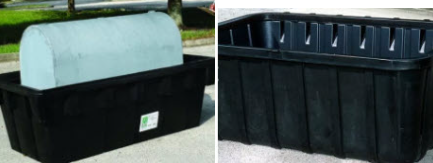Imagine a world where fuel tanks are like time bombs waiting to explode. Scary, right? That's where rigid secondary containment comes in. But what is it, and why is it crucial? Let's dive into the world of fuel storage and containment to understand its purpose and importance.

Understanding Rigid Secondary Containment:
Rigid secondary containment refers to a protective barrier designed to prevent fuel leaks and spills from reaching the environment. It's like a safety net for fuel tanks, ensuring that any potential leaks or spills are contained within a secure enclosure.
Why is it Necessary?
The primary purpose of rigid secondary containment is environmental protection. Fuel leaks and spills can have catastrophic effects on the environment, contaminating soil, groundwater, and surface water. Rigid secondary containment acts as a safeguard, minimizing the risk of environmental damage and ensuring compliance with regulations.
Who Uses It?
Rigid secondary containment is utilized by various industries and facilities that store or handle fuel, including:
- Gas stations
- Refineries
- Fuel storage depots
- Transportation companies
- Military installations
- Industrial facilities
Why is the Fuel Being Moved? Fuel is moved for various reasons, including:
- Distribution to gas stations for consumer use
- Refueling of vehicles and equipment
- Transfer between storage tanks
- Emergency response and disaster relief efforts
- Military operations
Detailing Its Purpose: The purpose of rigid secondary containment can be broken down into several key aspects:
- Preventing Environmental Contamination: By containing fuel leaks and spills, rigid secondary containment prevents environmental contamination, protecting ecosystems and public health.
- Regulatory Compliance: Many regulatory agencies require facilities to implement rigid secondary containment measures to minimize the risk of environmental pollution and ensure compliance with environmental regulations.
- Risk Mitigation: Rigid secondary containment reduces the risk of costly cleanup efforts, fines, and legal liabilities associated with fuel spills and leaks.
- Emergency Response Preparedness: In the event of a fuel spill or leak, rigid secondary containment facilitates prompt containment and cleanup, minimizing the impact on the environment and surrounding communities.
Conclusion: In summary, rigid secondary containment plays a critical role in safeguarding the environment and public health by preventing fuel leaks and spills from causing environmental contamination. By understanding its purpose and importance, we can appreciate the vital role it plays in fuel storage and transportation operations, ensuring safe and responsible fuel handling practices.


